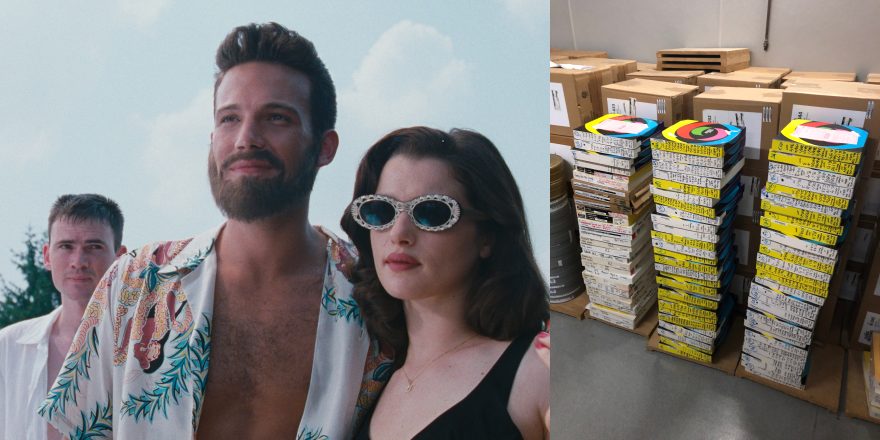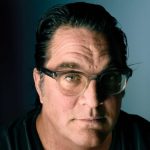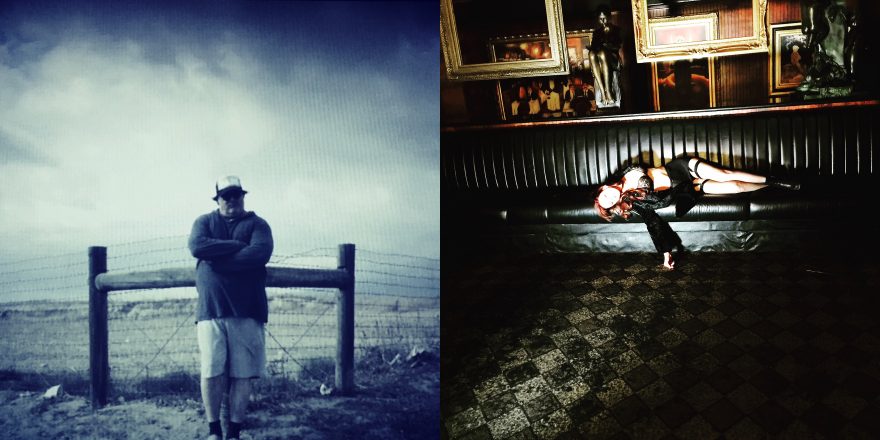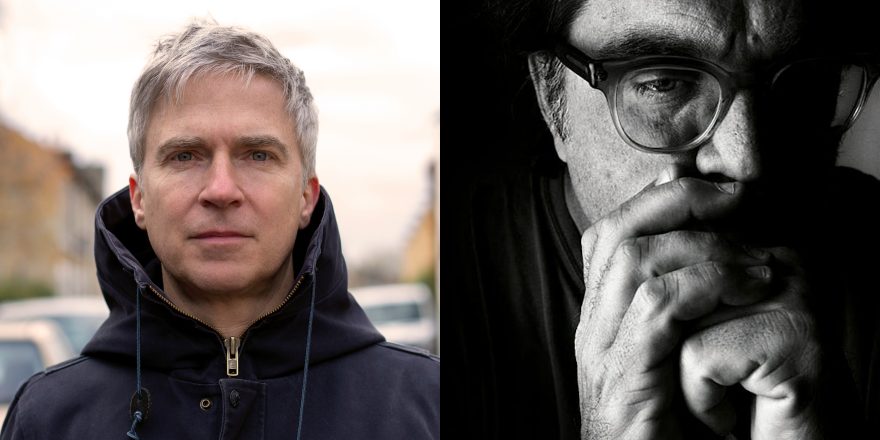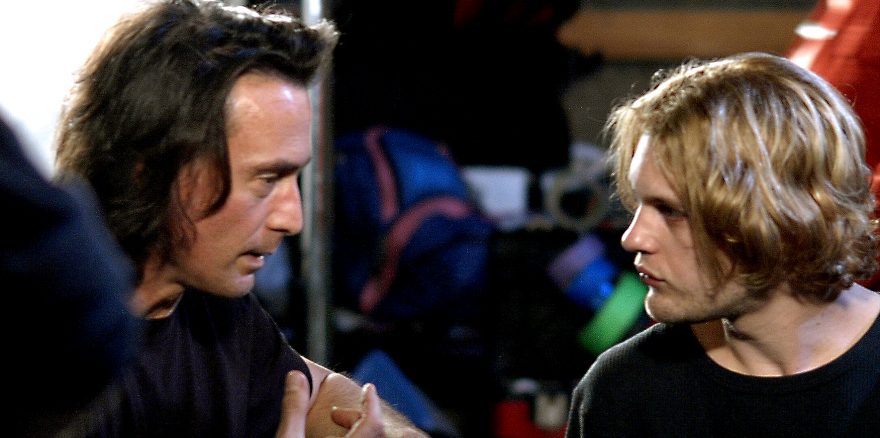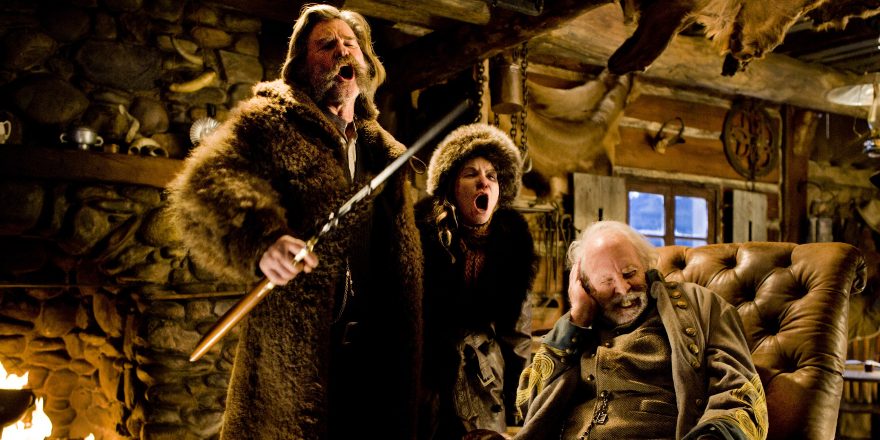My Director’s Edit of Going All the Way, out now in theaters, is a cinema redux entity. The revisitation project is a layered narrative of happenstance, possibility, reinvigoration and rediscovery.
The entire process, which lasted 18 months, has been a fruitful, creative and also demanding exercise. It was a beautiful gift for me to have the good fortune to be able to reimagine, re-edit and re-release my first film, 25 years after it first came out.
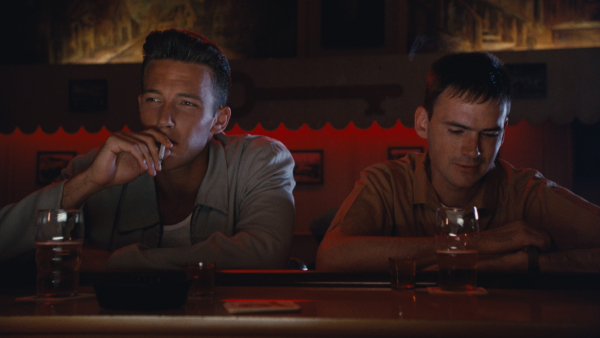
Here’s a bit of backstory from the olden days of rotary phones. As a young teen, I was preppy, a bit of a jock, slightly insecure, and overshadowed by my older brother and sister and assorted family dynamics. I first read Dan Wakefield’s novel Going All the Way in 1976, at the age of 14. My father was a member of the Book of the Month club and I discovered Going All the Way in the den of my childhood home in suburban Baltimore. Dan Wakefield’s novel was a coming-of-age story about two young Korean War vets, Gunner Castleman, an affable BMOC, and Sonny Burns, a nerdy, nebbish photographer. These two high school acquaintances reconnect on the train coming home from the war and spend the summer going through the recognition of what it is in their hometown of Indianapolis that they don’t want, and scratching the surface of the possibility of a life they do want. Their dream was to end up in New York City, a dream I myself was able to fulfill 10 years later, when I started working for MTV in 1983. The book told the story of sexual pursuits, drinking, frustration with parents’ expectations and all the kind of struggling/questioning philosophical coming-of-age tropes that Catcher in the Rye had presented, yet without the deeper cynicism. Wakefield’s voice was earnest, a quasi-spiritual questioning, funny in a mordant kind of way. The book tackled themes of peer pressure, individuality and friendship, and captured lust, hormones and sex. I loved and truly identified with Wakefield’s novel, reading it at least once a year.
Cut to 1993. I had won the MTV Video Music Award for Pearl Jam’s “Jeremy,” made plenty of commercials, documentary pieces and videos, and was looking to do my first narrative feature film. I spent some time trying to make a murder mystery about my father and Alzheimer’s called Clang, but I wasn’t able to figure out how to make that project work, so I spoke to my producing partner, Tom Gorai, about that book I loved growing up, Going All the Way. He read it and loved it as much as I did, and so we set out to try and make it. The insatiable passion and intense burning desire that filmmakers possess to make their first film was the fuel for the three-year journey to get Going All the Way made. We contacted Dan Wakefield and told him we wanted to have him write the screenplay. We reached out to Joni Sighvatsson at Propaganda Films, who was a fan of my work and understood my music video background. Propaganda agreed, Wakefield agreed, and so began a six-month journey to adapt the book.
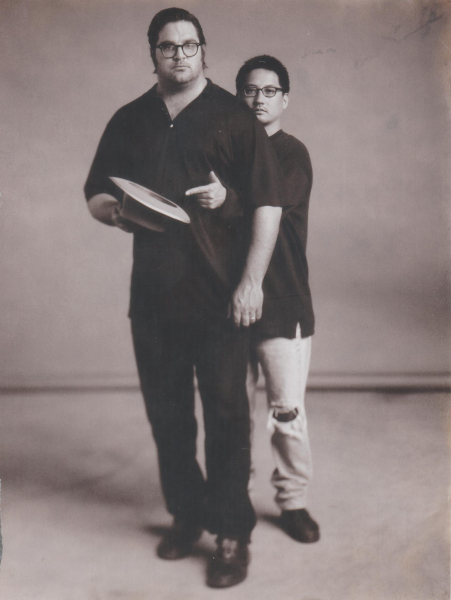
I knew the book inside out, so much so that I think I blew Dan’s mind – I was very specific about what parts of the story I liked, and even a few things I wanted to add. The process of learning how to adapt the screenplay was fascinating and Dan was very open to it. Tom had great story instincts as well and it was a pleasure to work with both of them. We ended up with a 138-page draft that was my dream. We got a green light from Lakeshore Entertainment – Joni had left Propaganda to go there and the head of Lakeshore, Tom Rosenberg, liked the script and agreed to make it for $3 million.
The casting process, led by Ellen Chenoweth, was fascinating. Because Tom only needed a couple of names in mom roles, we quickly settled on Lesley Ann Warren and Jill Clayburgh, after fruitless chases of Farrah Fawcett, Goldie Hawn and Dianne Wiest. With those two names on board, we were able to meet and audition every young kid between the age of 20 and 25 for the roles of Gunner and Sonny. This was 1996, the era of Ron Eldard, Billy Crudup, Mackenzie Astin, Ryan Phillippe, Adrien Brody, etc. We met everybody. I’d loved Jeremy Davies in Spanking the Monkey and he won the role of Sonny in a neck-and-neck race with Frank Whaley. Ben Affleck was my top choice for Gunner and that mix of affability, confidence and yearning curiosity seemed innate to Ben himself. Rachel Weisz came aboard as Marti (suggested by our agent Tracy Jacobs), Rose McGowan auditioned for and won the role of Gail, and Amy Locane won out over Lili Taylor for the role of Buddy. We cast an unknown Nick Offerman as Wilkes Wilkerson, one of Gunner’s old high school cronies.
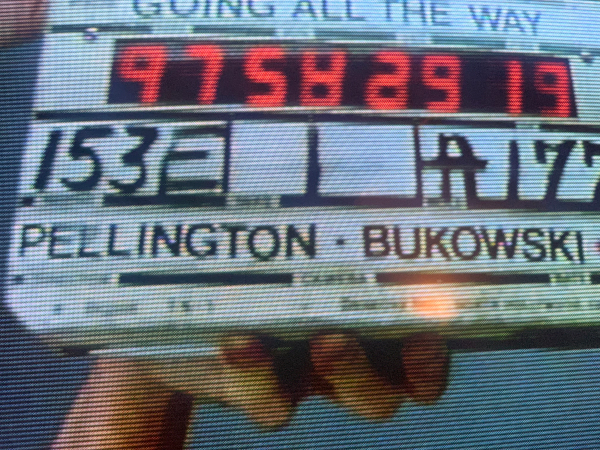
I was lucky to shoot Going All the Way in Indianapolis, in the real places where the book takes place: taverns, bars, the swimming pools and the neighborhoods, art museums, train stations – all of it. Of course, I was a first-time filmmaker. I shot a 135-page script, working 16-hour days, 6 days a week for 30 days. It was brutal – very, very hard on the crew – but we all bonded together. It was a first-timer mix of mistakes, enthusiasm and joy. I knew nothing of screen logic or screen direction and found myself enamored with the mere fact that I was making a period film. The book literally coming to life in front of my eyes was constantly a mind-blowing experience. I loved it, but I needed distance from it.
We edited the film and geared up to go to the Sundance Film Festival in 1997. The cut we delivered started with voiceover and an internal perspective and was one hour and 54 minutes long. The film was bought by Gramercy Pictures, who demanded cuts to make the film tighter and more of a sex comedy; Tom and I didn’t really fight that much because we were exhausted from making the film and felt, based on the Sundance reaction, that a slightly shorter version might play better with audiences. Hollywood will always try to make you shorten your film, tighten it and make it quicker. After making those cuts, we released Going All the Way and got decent reviews; there was some criticism of the film being uneven, which I think was justified. I don’t think I had the experience or the will, at that time, to say that people were “wrong” in their notes.
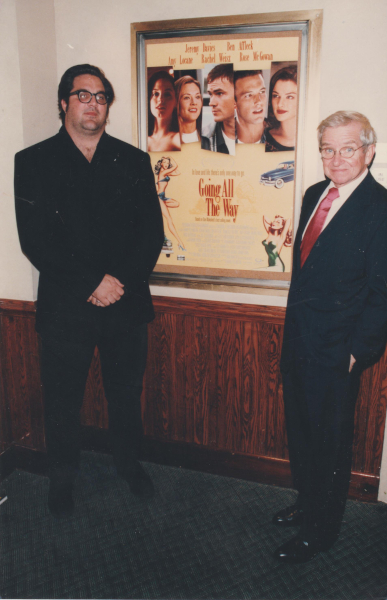
Cut to 2021. It’s 25 years later and I am doing some TV work with my films Arlington Road and The Mothman Prophecies. I mention to the powers that be at Village Roadshow that they also own and have the rights to a Ben Affleck movie which has “never been seen before.” Cue dollar signs. A friend there mentioned a studio launched by Adam Yauch in NYC, Oscilloscope, that was restoring ’90s films and said maybe they’d like it.
The fact that Ben and Rachel Weisz have become Academy Award-winning superstars made the film quite attractive. It had also never been on cable, TV, DVD, streaming or any of the other new delivery systems available to the viewer. No one could see it, therefore it didn’t really exist.
I was tenacious in convincing Lakeshore, who held the rights, and Dan Berger, Oscilloscope’s president, to come together to make the deal and get the rejuvenated Going All the Way out into the world. Dan was the reason this all happened. He saw the original, saw the reimagined edit and thought there might be a new audience for this. I’m grateful to him for being patient and allowing me the time I needed to put together this new version, which has 55 minutes of new footage, with restored sound and new score by my dear friend Pete Adams. The original score by Tomandandy was a patchwork of odd sound design and immersive dark inside material, but with no real music arc or theme, and thus the film relied heavily on ’50s doo-wop jazz and blues standards as needle-drops. Pete Adams’ score brings a new cohesiveness to the film, from the first note in the first frame to the end. His music makes the film completely different; more cohesive, spiritual and cinematic. Over 25 years and eight features, I’ve come to understand how important music is to a film, especially now that I’ve had a chance to redo my first movie and rescore it.
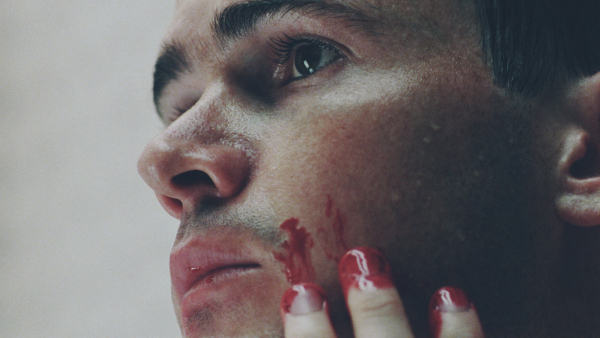
Leo Trombetta, the editor, was the key, and the hero of this restoration. He’s the one I first gave the drive to after finding the editor’s assembly on an old Betacam SP tape in my office when COVID hit. I told him, “Maybe we should look at this again …” Well, Leo certainly looked at it again and did a masterful job of shaping this cut; I tossed in a few ideas, a few directions. By eliminating much of the repetition in the first act, we were able to get Gunner and Sunny to a second act faster. By cutting some scenes, we reinstated others about mortality, future, aging, scenes between Sonny and his mother, the sequence where Sonny grows a beard, and the entire road trip, which is the culmination of the story and serves as the cathartic bond of Gunner and Sonny’s friendship. It was a restoration of the complete story, the full novel’s arc. With new voiceover and Pete’s score, it was a totally new vision.
We added a new title sequence too, created by Sergio Pinheiro. I had all sorts of old film strips, textures, optical images, tabletop film pieces for fantasies, a plethora of extra imagery that comes from my aesthetic, the Shoot like a music video and never turn the camera off vibe, which gives you the opportunity to assemble images for sequences that may or may not make the film. Well, they made the film this time, with a vibe that makes the world see Going All the Way in a new light.
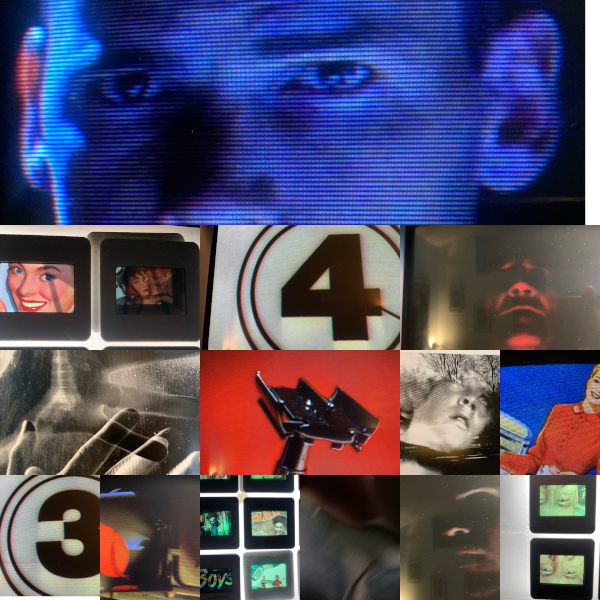
The restoration of the film itself was a beast – an 18-month journey from idea to release. When I sat and watched the finished film – remixed, restored – it brought it all full circle, and reminded me of my own journey in the summer of 1996. At that time, I was 34 years old, engaged to a beautiful woman named Jennifer. My bride-to-be, who worked on the film, lived with me in an apartment in New York. It was the beginning of our life together. As a filmmaker, I was taking my first step. My father just passed away, yet here I was making my first movie based on a book he had put on the shelf in his den, a book about the ’50s, written in the ’70s, made by me in the ’90s. So much has happened since then with the passage of time – the birth of a child in 2001, the loss of my dear wife Jennifer in 2004, single parenting, the ups and downs of my career, physical ailments, other losses, other joys … life itself. One of the great blessings of this new version of Going All the Way is that Dan Wakefield, at 90 years of age, got to see the new cut before glaucoma robbed him of his eyesight. “Blessed,” as he would say.
Now on the other side at age 60, as a filmmaker and a man, I feel so lucky to have had a chance to reshape the narrative and present to the world a more complete vision of this film. I can’t think of many filmmakers who wouldn’t want to go back and tweak their earlier work, so I remain grateful for that opportunity. Going All the Way reemerges into a different world, but it appears, flickering, all ones and zeroes now, but still analog, pure cinema, film at heart, words in soul, from the page, from the memory, from the heart. A story lives now, eternal.
Featured image (left) shows Jeremy Davies, Ben Affleck and Rachel Weisz in Going All the Way, and (right) the original footage from the film from which the Director’s Edit was created. (Photos courtesy Oscilloscope and Mark Pellington.)



